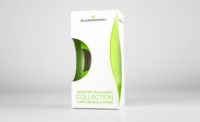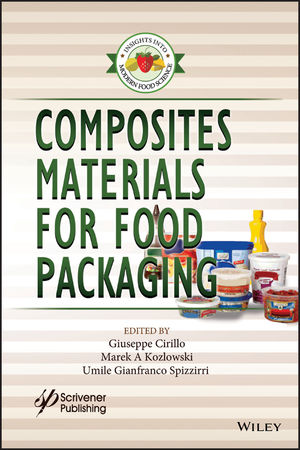Packaging
Creating packaging for elderly consumers
Selig Group’s John Brown talks about creating liners that the elderly can easily remove.

Large PET juice carafes from Tropicana and Simply Orange have been redesigned to allow for seals that are easier for the elderly and others with limited mobility and dexterity to open. Moving from opaque, gable top containers with plastic ring pulls to clear PET allowed the use of the larger and more consumer friendly Lift ‘n’ Peel liners, as well as visual access to the packaged product. Source: Selig Group.
With an ever increasing aging population living independent lives for longer, there are increasing challenge of creating packaging that is secure and hermetically sealed, yet is also easy-to-open for consumers who are elderly, lacking strength or dexterity or who are otherwise impaired.
Induction heat sealing and the correct balance of pressure, heat and time, together with the most appropriate lining material can be used to overcome this problem. Below, John Brown, Selig Group’s vice president of global marketing, talks about the latest innovations designed specifically for elderly consumers.
Food Engineering: What are the challenges associated with easy-open-packaging for the elderly and what are some ways they can be overcome?
John Brown: With an ever-increasing aging population, it is a genuine challenge to try and ensure that food product packaging is visually appealing, easily accessible and can be opened by everyone while still protecting the product.
This has historically been an issue with products that have needed to be foil induction sealed so as to guarantee product freshness and extend shelf life while also providing the consumer with a visible means of tamper evidence when necessary.
The need for a securely applied hermetic foil seal can result in tricky to peel or pierce seals for consumers who are elderly, suffering from arthritis or are lacking physical strength or dexterity. Balancing the need to protect consumers by ensuring product integrity and tamper evidence versus providing a package which is easy to open by all can be a real challenge.
The latest generation of Selig induction lining materials are easily peelable, meaning that they can be opened easily by even those with dexterity or mobility issues or arthritis. In addition to this, following extensive consumer research, Selig’s latest Lift ‘n’ Peel liners feature a clear, pictorial image of how to open, making it easier still for consumers to access the product contents.
Food Engineering: How is sealing impacted when companies design packaging that is easy to open for the elderly?
John Brown: The challenge faced by food and beverage companies is to maintain a genuinely hermetic seal for product preservation and freshness, as well as tamper evidence, and leak prevention, but easy for the consumer to open.
The solution is to use a lining material which has been specifically formulated to be easily peelable, so all objectives are met. By working closely — and at a very early stage — with an experienced liner supplier such as Selig, food manufacturers are able to ensure that their packaging is safe to use and accessible to all.
Food Engineering: Do you have any examples of products that you redesigned to make them easier to open?
John Brown: Good examples are the large PET juice carafes from Tropicana and Simply Orange.
Moving from opaque, gable top containers with plastic ring pulls to clear PET allowed the use of the larger and more consumer friendly Lift ‘n’ Peel liners, as well as visual access to the packaged product.
In the food segment, condiments such as honey and salad dressings have migrated to these half-moon tab liners as well, not only for convenience, but also to avoid the consumer’s fingers or hand inadvertently touching the product contact surface — necessesating a hand cleansing after touching a sticky or messy product.
Food Engineering: Aside from creating packaging that’s easier to open, how else does your method help companies who are packaging products and their consumers?
John Brown: Selig manufactures a range of tamper evident cap and closure lining materials for use across a broad range of applications from pharmaceutical, food and beverage, agrochemical, cosmetics and healthcare.
These specialist lining materials are widely used in the food and beverage industries on all sorts of liquid and solid products as they can not only offer easy peelability to consumers, meaning that packages are easier to open, but they also enhance product shelf life and provide tamper evidence (hermetic seal does not mean TE, it means a gas/vapor/liquid barrier), increasing consumer confidence, guaranteeing product integrity and preventing leakage.
The latest generation of Selig’s induction liners, such as Lift ‘n’ Peel, are manufactured with a half-moon tab for easy peelability, even by those with limited mobility and dexterity. Typically, these liners are widely used by some of the biggest names across the food and beverage market.
Induction sealing (also referred to as induction heat sealing) is a tried and tested non-contact method of hermetically sealing a foil liner to the neck of a container to provide tamper evidence, enhanced product freshness and lead prevention.
The process itself is relatively straightforward — the closure is fitted to the filled container with an appropriate liner already inserted. There are many different configurations of liners to choose from depending on the product type and sealing objectives, product specialists at suppliers such as Selig are able to advise on the most suitable.
A typical induction liner is multi-layered, may consist of a top layer of paperboard which stays with the closure for reseal, a thin layer of wax which is used to temporarily bond the pulp to the foil based seal. That foil-based seal is often printed with the brand owner’s logo, may have a barrier layer of PET or similar film underneath the foil, and finally a polymer heat seal layer which bonds to the container.
Once the closure is applied, the container is then passed underneath an induction coil, which emits an electromagnetic field. The electromagnetic field induces heating of the foil, which melts the wax, which is absorbed into the pulp backing, releasing the pulp to stay in the cap. The heat also melts the bottom polymer layer which, when cooled, forms a bond between the neck of the container and the foil, resulting in a hermetically sealed container.
For more information: John Brown, Selig Group, sales@seligsealing.com, www.seliggroup.com
Looking for a reprint of this article?
From high-res PDFs to custom plaques, order your copy today!








